Will the intended housing supply be met in NSW via TODs?

Recently, the NSW Government finalised new planning controls through an amendment to the Housing State Environmental Planning Policy (SEPP), for 18 of the 37 identified Transport Orientated Development (TOD) precincts.
The reforms came into effect on 13 May 2024 with the remainder of the precincts are forecast to be implemented between July 2024 and June 2025.
These precincts form Part 2 of the Government’s TOD program which upzones land around train and metro stations to unlock up to 175,000 additional homes over the next 15 years. Part 1 of the program related to accelerated precincts is still due to be finalised by the end of the year.
The station precinct timeline
Since the announcement of the housing reform policy, there has been several positive moves.
The Department of Housing, Planning and Infrastructure (DPHI) has been working towards their earmarked deadline for implementation and have consulted with impacted councils. Leading to the staged implementation approach highlighted below.
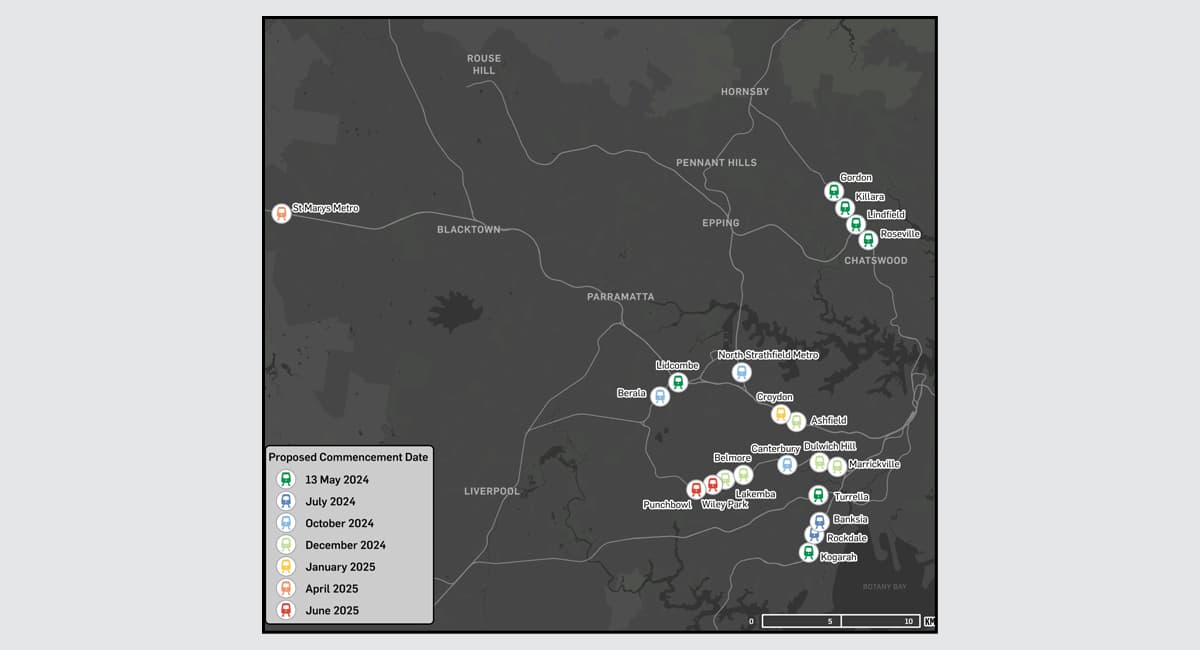
The majority of councils are coming to the table tasked with delivering their own housing policies to facilitate at a minimum, the dwellings forecast by the SEPP amendments. Let’s wait and see what these plans entail but DPHI have been clear that if these proposed plans are not adequate, the SEPP will take precedence.
The SEPP itself has evolved from the initial exposure, building heights have increased to 22 metres and the number of identified precincts has also expanded, including six additional precincts nominated by Councils.
It is positive to see collaboration between the two layers of government, hopefully providing enhanced outcomes for deferred precincts.
If Councils wish to remain in control of planning for their area, there is a clear message that they need to be doing more to meet the NSW committed housing target of 75,000 dwellings per annum target.
New planning controls
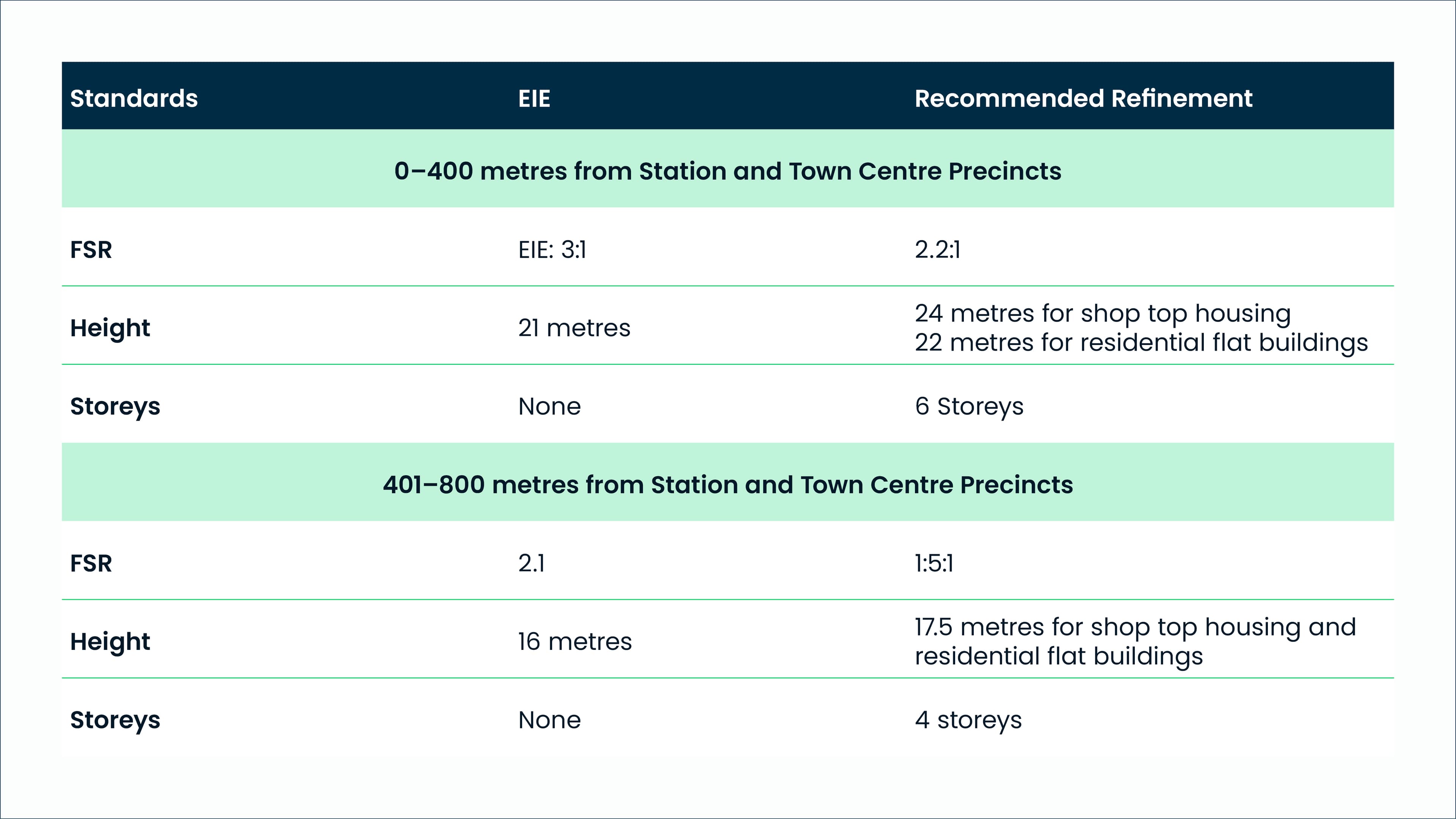
What's in and what's out?
A TOD area is generally land within 400m of a railway or metro station and identified within the TOD Sites Mapping – but not all land within this radius is included under the new TOD controls.
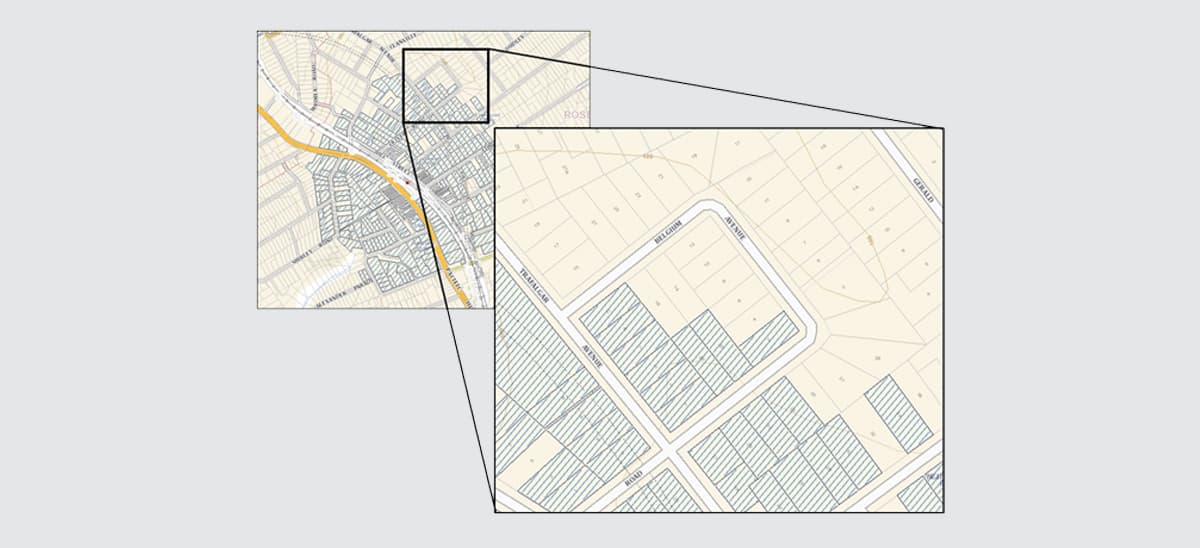
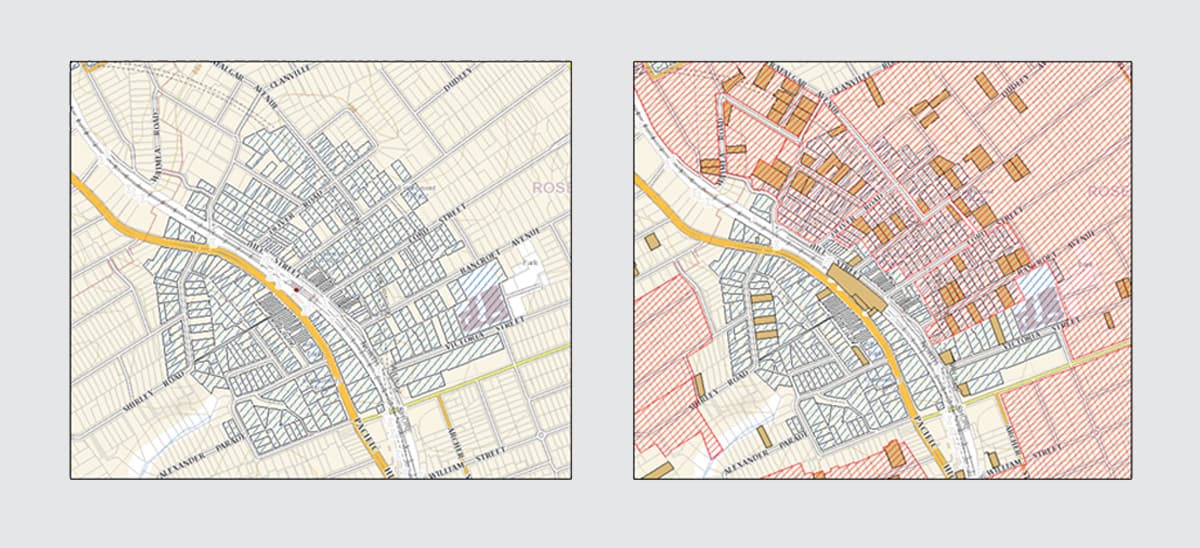
What’s in?
Lots partly within and partly outside of the 400m radius are included. The question remains what is the application of TOD controls in the circumstance that lots outside of the 400m radius and not identified in the TOD Area Mapping are amalgamated with a lot identified within the area to deliver a development outcome consistent with TOD objectives. Our view is that any part of a ‘development site’ that is within the 400m TOD area, should be included.
- The infill affordable housing incentives will apply to the TOD area, with contributions applicable, as per each of the policies (i.e. 15% under the infill affordable housing policy and 2% under the TOD SEPP).
- DPHI have indicated that where a lot contains 2 or more land-use zones, the TOD controls will only apply to the portion of land that has a relevant zone. For example, if a property is partially zoned MU1 Mixed Use and R4 High-density Residential, only the portion of the site that is R4 High-density Residential can be developed under the TOD controls. Given the MU1 zone is capable of supporting residential and serves the same function as Shop-Top Housing, it is unclear why DPHI have applied this rule.
- Heritage conservation areas (HCAs) are included however it will be up to Council to determine the removal of non-contributory heritage items, which creates great uncertainty when procuring sites. Particularly with broad statements such as “any new development needs to improve and enhance the heritage values.”
- What’s not clear is how contributory and non-contributory items will be considered in the context of new development up to 22m in height and 2.5:1 FSR. This may result in conflicting priorities between the aims of the TOD and the level of heritage protection afforded by councils. Council retains the ability to approve or reject DAs based on their merit assessment of the potential heritage impacts.
- The Apartment Design Guide continues to be the principal guiding document for apartment development, including development in TOD areas.
The original policy document outlined that amended design criteria would be proposed that reflect the unique design challenges of mid-rise buildings and may vary some existing ADG provisions. At this stage, no further guidance has been provided, however without prescribed flexibility in creating design outcomes on the identified sites, there is risk of lengthy assessment delay or even refusals on ADG matters which will undermine the policy intent.
What’s out?
- MU1 zones – given residential flat buildings and shop top housing is permitted in the MU1 zone, it is unclear why this is specifically excluded.
- State and local heritage items, Aboriginal objects, or sites within an Aboriginal place of heritage significance, and archaeological sites are excluded.
- The available mapping and information accompanying the SEPP amendment indicate that the TOD controls do not apply to heritage items. However, there is no explicit wording to this effect in the amendment at this stage.
- Based on existing information, it is assumed that delisting of heritage items will be required to ensure benefit of the TOD controls. Delisting will not be appropriate for most heritage items and successful delisting (for a standard, contextually isolated property) will be difficult with no guaranteed outcomes.
Will this deliver the housing we need?
Including heritage in sites
The TOD SEPP specifically states that heritage items are excluded. To avoid isolating heritage sites, there remains an opportunity to include them in sites to meet set criteria and potentially capture the available FSR. This would result in a more integrated urban approach and ensure that heritage items don’t stifle the ability to deliver housing or become isolated sites.
Where an amalgamated site adjoins a heritage item, the level of risk will be subject to a merit-based assessment and each site will need to be assessed to determine the ability to achieve the uplift. This creates uncertainty and development risk, particularly in areas such as Roseville above.
If your site is within a HCA or identified as a heritage item, our Heritage experts can help you understand potential pathways forward as this will be key to formulating a merit based response.
New minimum lot width control
A new development standard has been incorporated requiring any development to be on a lot at least 21m wide at the front building line. This new provision has the potential to create challenges to site amalgamation.
Why stop at 37 stations?
There is a real missed opportunity in not including the provision for housing uplift around all train stations, where it is tied to a material delivery of affordable housing and where amenities, infrastructure and economic opportunities are available. Development feasibility is challenging for most sites and infrastructure costs are prohibitive in greenfield areas which means more sites need to be made available if we have any hope of slowing the steep housing affordability trajectory.
Who are the real winners here?
Ultimately, we expect the initiative will facilitate more housing supply in well located areas which is critically needed for the wider community, however a small few will benefit greatly.
Landowners that fall within the 400m radius have instantly received a land value uplift. For highly desirable precincts we expect transactions to now occur swiftly and the theoretical value uplift to materialise. The acquisition cost together with the costs associated with securing development approval and construction ultimately are placed on the end purchasers in the apartment cost.
With housing being the largest single cost of living issue, the NSW Government needs to consider ways to level the playing field in terms of the benefits that are generated by state led rezonings. In Victoria, in such instances, a ‘windfall gains tax’ for landowners that are located in the areas of uplift to enable a more equitable distribution of benefits from the policy change applies. Such an approach warrants consideration in our view, but only if its met with the switching off of other property taxes or development contributions. For example, one scenario could be that the NSW government utilises the windfall gains tax revenue for regional infrastructure to support the growth in the TOD precinct, and thereby ‘switching off’ HPC contributions. This will ensure the benefits of the value uplift are shared beyond the small number of landowners who are located within the TOD areas, as well as managing the continued escalation of development fees and contributions payable, that are having a material impact on project viability and affordability.
It is important to note that the State Significant Development Application pathway (triggered by a development threshold of $60M) is only applicable to the Part 1 TOD Accelerated Precincts. This means that development applications under the TOD SEPP will be assessed by Councils.
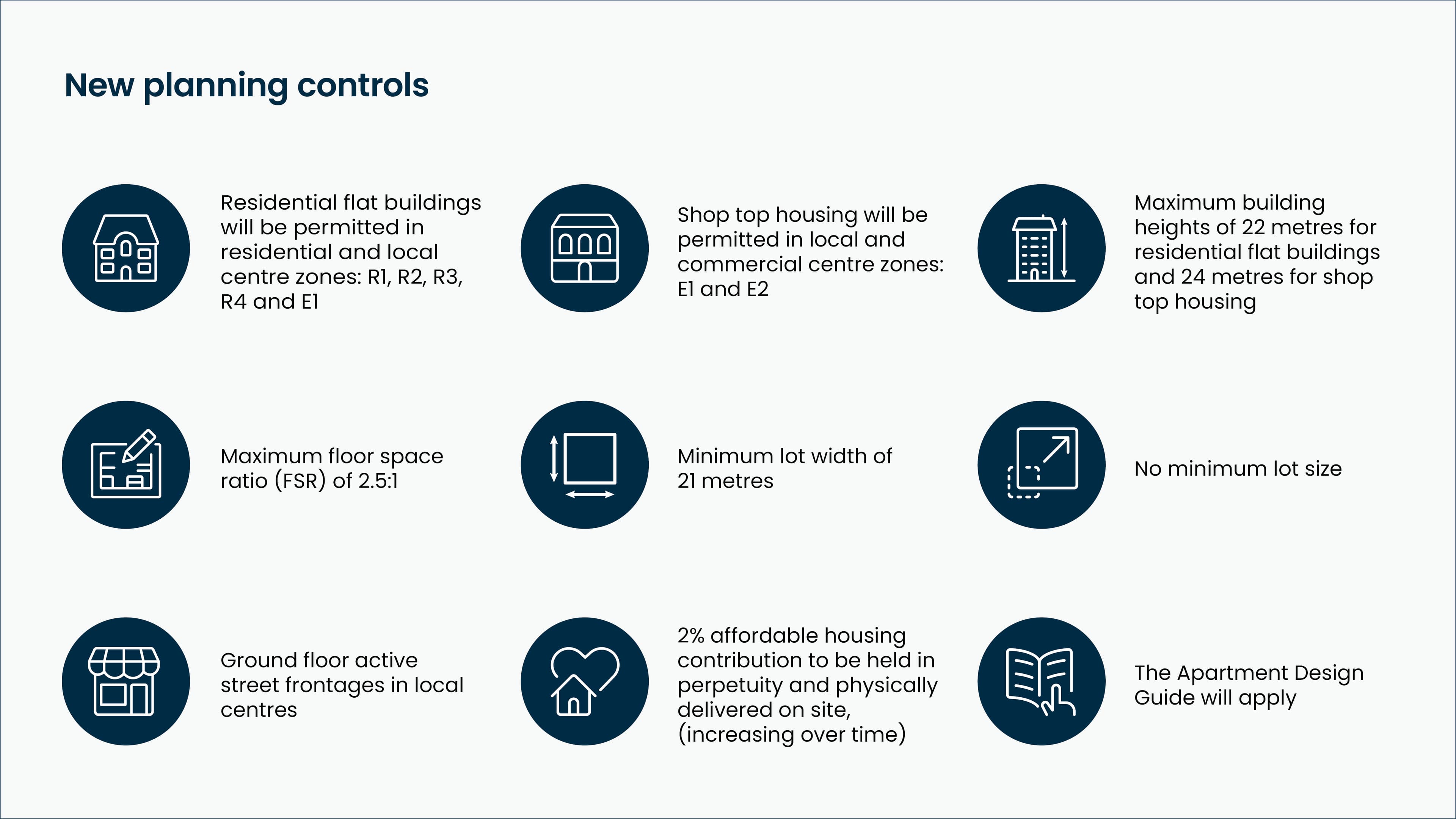
Where to now?
The future TOD Areas will be rolled out through a staged approach, with the remaining 19 precincts being implemented over the coming year. Work is also underway with Stage 1 of the TOD reforms to master plan the 8 Accelerated Precincts, with the goal of rezoning these areas by the end of the year.
This is an evolving policy with a number of stages for finalisation and one key policy move amongst a suite of reforms which the NSW Government is implementing to boost housing supply and deliver on the targets set within the National Housing Accord.
Underpinning these policy initiatives are revised housing targets for councils to deliver on housing supply, including social and affordable housing. These housing targets haven’t been updated since 2021 and are anticipated to drop later this year. This will be important from a development and approvals perspective to ensure all levels of government are aligned for housing supply and delivery.
Overall, we applaud the NSW Government for continuing to release new policies within their agreed timeframe in an attempt to unlock housing supply. But we must ensure all levers are being pulled to get NSW to the committed target of 75,000 dwellings per annum and ensure that the policies create feasible development outcomes.
Connect with our experts
We will continue to provide updates as these reforms are rolled out, but if you’d like to know more, please reach out to our team.









